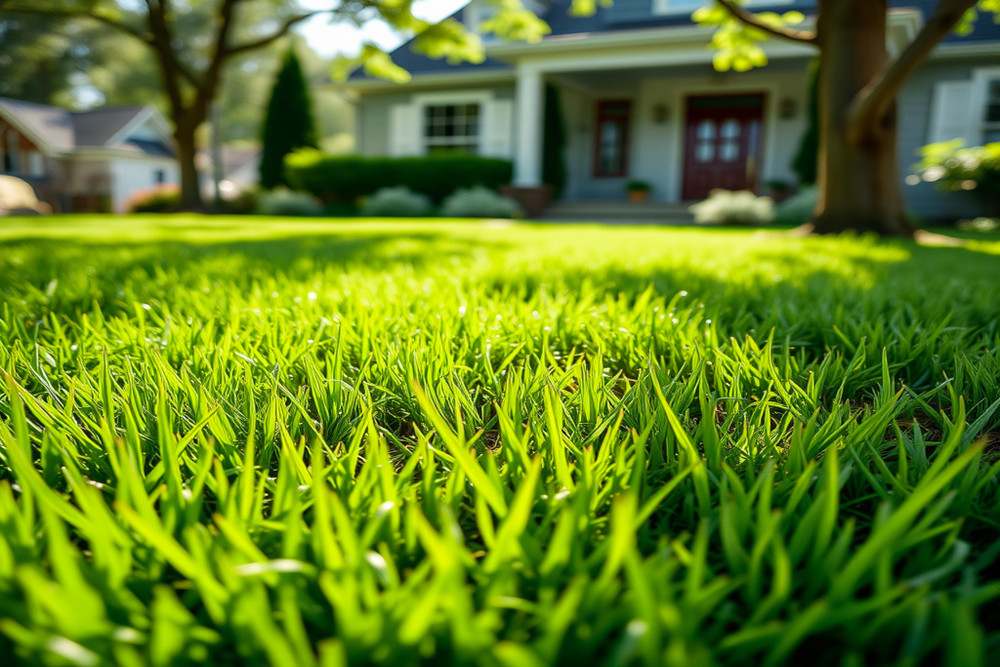Atlanta Sod Guide | Best Grass Types, Planting Times & Lawn Care Tips
Posted by Farm2Yard on Sep 19th 2025
Atlanta Sod Guide: Best Grasses, Planting Windows & Year-Round Care
1) Climate: What Atlanta’s Humid Subtropical Climate Means for Sod
Atlanta sits in a humid subtropical (Köppen Cfa) zone - hot, humid summers, generally mild winters, and no true dry season. Practically, that favors warm-season turf that loves heat, with cool-season options in shadier or north-facing spots. Use this as your north star when choosing sod. (Köppen overview; NOAA normals background).
On cold tolerance: the 2023 USDA Plant Hardiness Map puts much of the urban core in Zone 8a (with pockets trending warmer), which broadens the palette of warm-season grasses and influences cultivar choice. Check a specific ZIP to confirm. (USDA interactive map).
2) Best-Performing Sod Types for Atlanta
Prioritize species proven by University of Georgia (UGA) Extension for Piedmont Georgia (Atlanta area):
-
Bermudagrass: Excellent heat and wear tolerance; thrives in full sun; fast recovery from traffic; goes dormant brown in winter. (UGA: Lawns in Georgia - Selection & Species).
-
Zoysiagrass (Zeon or Emerald): Dense, fine-to-medium texture, good heat tolerance, better shade tolerance than bermuda; slower to establish.
-
Centipedegrass: Low-maintenance option for low-to-moderate traffic lawns; prefers sun; lower fertility needs; slow recovery from damage.
How to decide: Full-sun, high-traffic = bermuda. Sun to light shade, more “carpet” look = zoysia. Low-input lawns = centipede. Heavily shaded or north-facing = consider tall fescue (especially under trees), understanding summer care demands.
3) Local Weather & Site Nuances That Affect Sod Choice
-
Heat & summer rainfall: Summers are long/hot with frequent storms; good for warm-season growth but also for disease windows during spring/fall transitions (e.g., large patch, spring dead spot on bermuda). Choose cultivars with good disease resistance and follow UGA fungicide timing guides. (UGA turf publications hub).
-
Winter lows: Zone 8a lows usually spare warm-season grasses from severe cold injury, but microclimates can cause damage. Avoid late nitrogen so turf hardens off before freezes. (UGA fall prep guide).
-
Piedmont red clay & compaction: Heavy clay + traffic means core aeration during active growth (late spring–summer for warm-season; fall for tall fescue) and organic-matter topdressing help infiltration and rooting. (UGA Lawn Calendars).
-
Watering rules for new sod: UGA calendars note a 30-day establishment allowance for newly laid sod; plan irrigation accordingly and check local ordinances. (UGA bermuda calendar).
-
Soil pH: Many Georgia soils trend acidic. Test and lime per UGA recommendations (warm-season turf generally best at pH ~6.0–6.5; centipede tolerates lower). (UGA Soil Testing brochure).
4) Seasonal Maintenance Requirements
Spring (green-up to early summer)
-
Wait for green-up before nitrogen. Mow to species-specific heights. Apply pre-emergent for weeds. Aerate once warm-season grass is actively growing.
Summer
-
Prime growth. Fertilize and irrigate ~1"/week, monitor for disease/insects. Aerate if needed. Maintain mowing height and avoid scalping.
Fall
-
Stop nitrogen to avoid tender growth; apply pre-emergent for winter weeds; manage large patch.
Winter
-
Dormant. No fertilization or aeration; water dormant sod if installed in winter. (UGA winter install note).
5) Best Time of Year to Lay New Sod in Atlanta
-
Late spring through summer - after soils warm for rooting. Winter installs can succeed but need diligent irrigation. (UGA Basic Sod Management).
6) Other Practical Tips for Atlanta Sod Success
-
Soil test first. Submit samples through UGA’s lab and lime/fertilize per results.
-
Prep beats repair. Address grading, compaction, and organic matter incorporation before laying sod. (UGA Establishment guide).
-
Match mowing height to species. Bermuda: 1–2"; hybrids: 1–1.5"; tall fescue: 2–3"+; zoysia: 1–2". Never remove more than ⅓ at a time.
-
Irrigate to need, not habit. Aim for ~1"/week in summer (including rain). Use the 30-day establishment allowance wisely for new sod.
-
Plan for shade honestly. <4 hours of direct sun? Even zoysia thins. In dense shade, UGA often recommends mulch or groundcovers.
Bottom line for Atlanta
-
Full-sun, high-use yards: Bermuda sod.
-
Sun with some shade, premium look: Zoysia sod.
-
Low-input, low-traffic: Centipede sod.
-
Persistent shade: Tall fescue or non-turf alternatives.
-
Best install windows: Late spring–summer for warm-season; fall/winter for tall fescue.
? Ready to transform your Atlanta lawn? Get a quote from USA Sod and connect with trusted local farms and installers.

